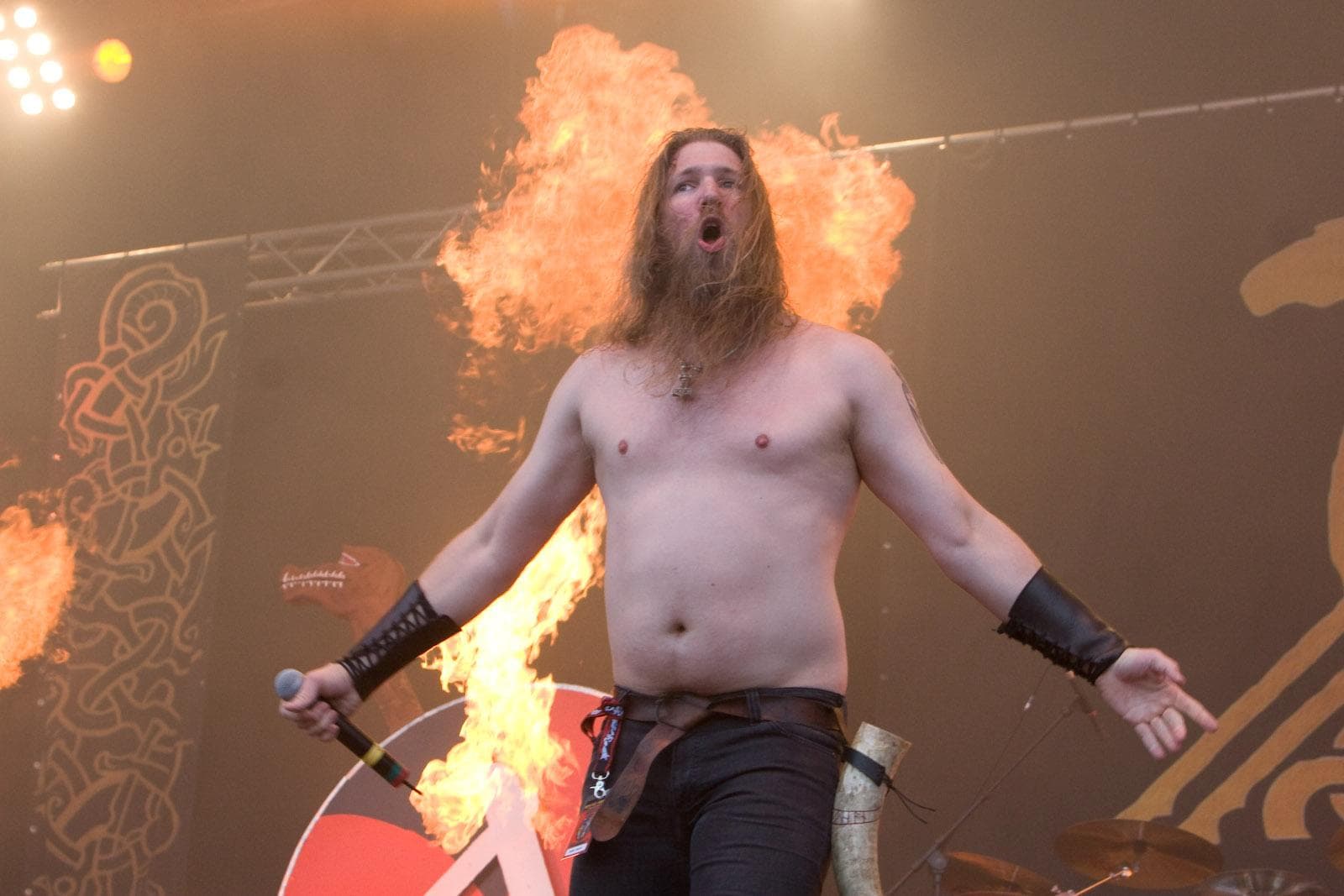-
(#9) Pitched Battles Were As Rare As Chinese Cuisine For Vikings
In the show, viewers often see Vikings lining up on the battlefield, facing their enemies, and running at them like the ancient Greeks and Romans would have done. In reality, however, this way of fighting was very uncommon for them, as they’d rather go raiding and take their adversaries by surprise. Their war philosophy was based on speed and effective ambush, which was the main reason why they wouldn’t send many ships on their first raids and made surprise attacks.
So, in order to move quickly during a raid, they did not wear much armor - as the show correctly highlights - and used long swords and axes for weapons. Of course, that doesn’t mean the Vikings never engaged in pitched battles; they did, but just not in the way the show often portrays.
-
(#3) The Vikings Didn’t Call Each Other “Viking”
During the Viking Age, the people of Denmark, Norway, and Sweden spoke a language called Old Norse, but there’s no historical evidence that they used the word Viking to ethnically identify each other. This, despite the fact that viewers see them proudly calling each other a Viking throughout the series. There are various theories as to how the word Viking came to be, but there are no credible historical sources that verify what the Vikings called themselves.
What scholars know for a fact is that the people the Vikings invaded, such as the Saxons and the Franks, usually referred to them as Nords, Norsemen, Northmen, or Danes. In reality, the word Viking became popular worldwide for the first time during the Romantic era in the nineteenth century, when the study of Viking-age history became fashionable.
-
(#4) The Show’s Geography Is All Over The Place (Except Its Actual Location)
According to the Old Norse poetry and sagas from the Viking Age, the real Ragnar Lodbrok was the son of the Swedish King Sigurd Hring and a relative of the Danish king Gudfred. Logically, he probably lived in Sweden or Denmark. However, in the series, Ragnar’s kingdom is located in a deep fjord that looks exactly like the ones you would find on the west coast of Norway. What complicates things even more is that Denmark and Sweden do not have fjords like the one in the series.
In the eighth episode of the first season, viewers see Uppsala for the first time, and the temple of Odin is shown as a wooden stave church in the mountains. In reality, the temple was actually situated on flat land, while stave churches were a hallmark of Christian architecture from the 11th century onward. After spotting these geographical inaccuracies, the fact that the Vikings refer to the British Isles as “England” when this name didn’t even exist at the time shouldn’t surprise anyone.
-
(#5) Lagertha Probably Wasn’t As Badass As The Series Portrays Her
Sorry to disappoint you guys and gals, but the whole concept of the “shieldmaiden” is based on Scandinavian folklore and myth, since there’s not even a single credible source that proves the existence of a group of Viking women who had chosen to fight as warriors. Sure, there’s archeological evidence that proves a number of women took part in some raids and battles, but this was a rare occurrence, and most historians speculate that their role in battle was limited.
So they could never have compared to Lagertha in terms of fighting skill. In reality, Lagertha is likely pulled more from Scandinavian myth as a representation of an idealized female figure in Viking culture.
-
(#2) The Vikings Wore Helmets That The Show Totally Ignores
Any true fan of Vikings should feel relieved about the fact that Michael Hirst (the writer of the series) doesn’t present that ridiculous stereotypical image of the raiders wearing those funny little horned helmets, which it has been historically proven the Norsemen never wore in battle. In reality, those horned helmets were only used in religious ceremonies and for display.
However, Hirst falls into another trap and depicts the Vikings as fighting without wearing any helmets at all, which is simply wrong. Considering that most combat fatalities come from head wounds, the helmet has been the single most precious piece of armor for pretty much every warrior in history, and that doesn’t exclude the Vikings. One could claim that Hirst probably does this in order for the main heroes to be easily recognized by the viewers during a battle scene, but it’s still a historical inaccuracy since the famous raiders wore fighting helmets made from leather or iron.
-
(#11) Saint Ansgar Is Depicted As A Failure In The Show (Which Was Not The Case At All)
Many of you might not even remember the young Christian missionary who was executed after he failed to impress Queen Aslaug in Season 3. This young man was Ansgar, one of the most famous missionaries of medieval Europe and the first archbishop of Hamburg. Ansgar was cordially received by King Björn and became the first-ever preacher of the gospel in Sweden. He also organized the hierarchy in the Nordic countries and was declared Patron of Scandinavia.
What’s even more impressive is that Ansgar succeeded in thwarting a pagan rebellion before returning to his homeland, Bremen, in 854 CE. Despite his immense historical impact in Scandinavian countries, the writers decided to portray him as an absolute loser who died violently at a young age. The real Ansgar died peacefully at 64, quite an advanced age for his time.
New Random Displays Display All By Ranking
About This Tool
Our data comes from Ranker, If you want to participate in the ranking of items displayed on this page, please click here.















